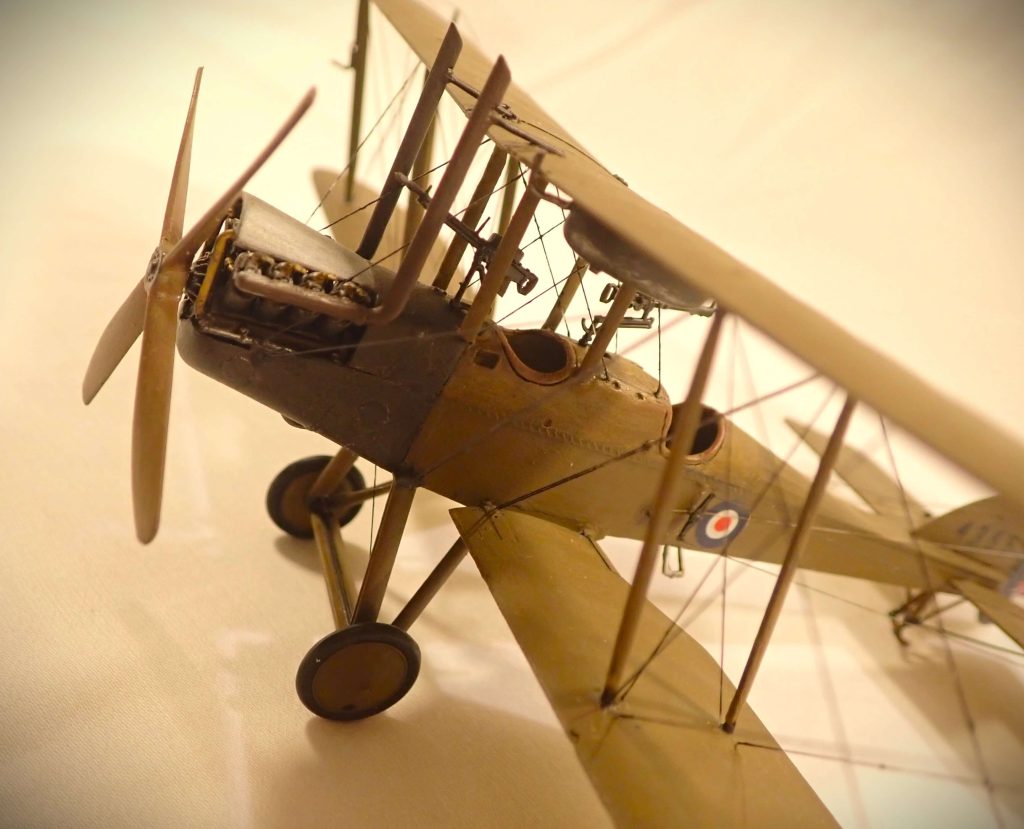The Royal Aircraft Factory BE.2 was the first aircraft type to enter service with the Royal Flying Corps in 1912. King George V signed a Royal Warrant to establish the service. At the time the British Army operated 1 balloon squadron and 36 aircraft which were divided between four squadrons. The Army used them for artillery spotting and reconnaissance. The Balloon facility at Farnborough became the Royal Aircraft Factory in 1912 as a research facility for aircraft engines and design. In 1918 to avoid confusion with the newly formed Royal Air Force, it was renamed the Royal Aircraft Establishment.
The BE.2 was one of the first aircraft to be introduced on the Western front in 1914. It was a standard two-seat tractor biplane specifically designed for reconnaissance and observation. The pilot sat in the rear cockpit with the observer in the front, a set-up which proved to be far from ideal. It was a very stable machine and therefore slow with limited manoeuvrability, perfect for observation and aerial photography but no match for the German fighters. The position of the observer also meant a poor field of fire for his weapon.
The BE.2c was a redesigned version which was introduced in 1915 and began replacing all the BE.2’s in service although the performance was not improved.
Large numbers were ordered during the first year of the war and the type entered service in February 1915. It was very quickly realised that the aircraft was of no match to enemy aircraft as great numbers were being shot down with the advent of the Fokker scourge in late 1915, leading the press to refer to the type as “Fokker Fodder”. Already obsolete it remained in service until it could be replaced with newer planes. Once removed from front line service it was relegated to home defence, night fighter and coastal patrol. In early 1917 the type was restricted to training duties only. Some were dispatched to Arabia as part of the Expeditionary Force.
